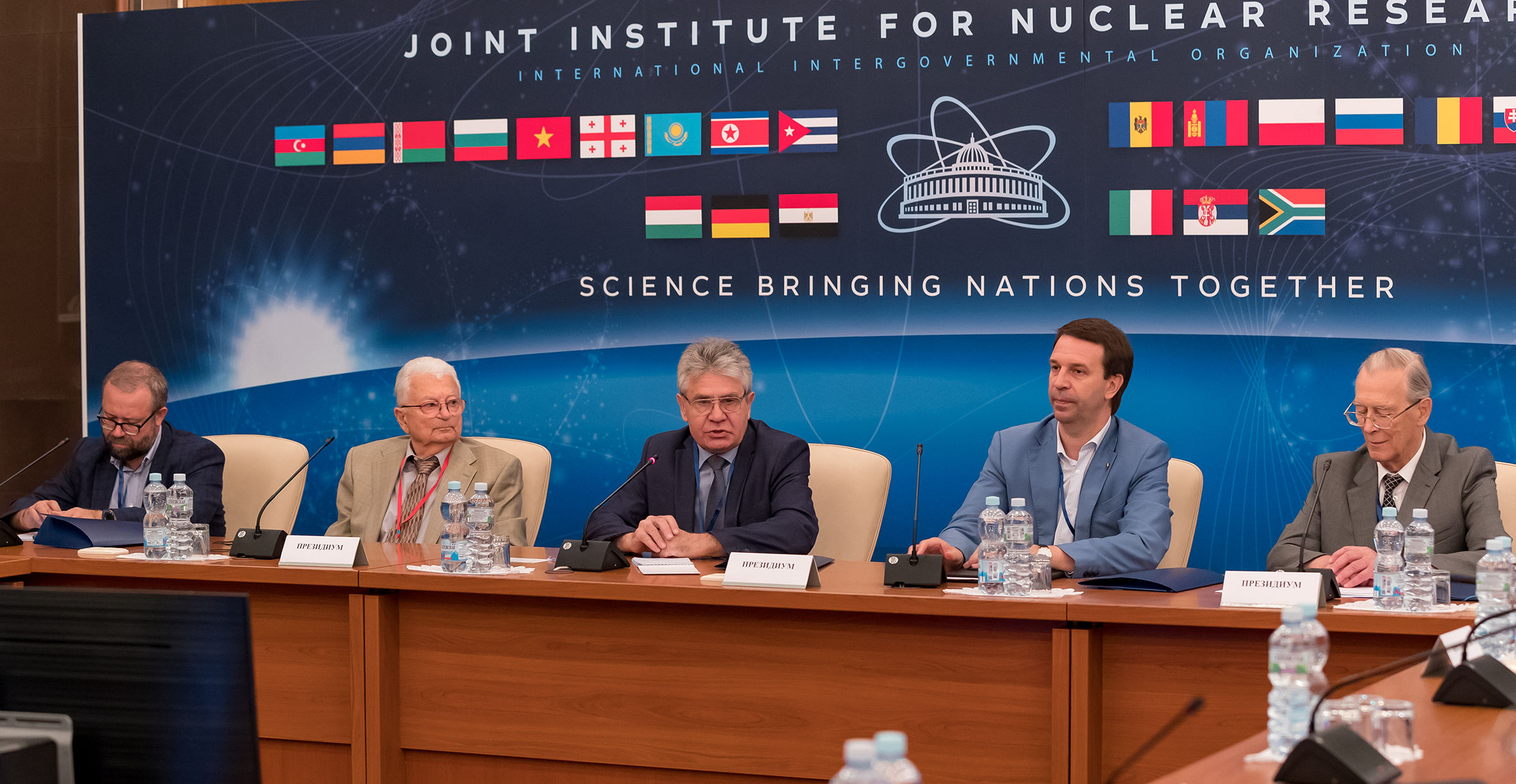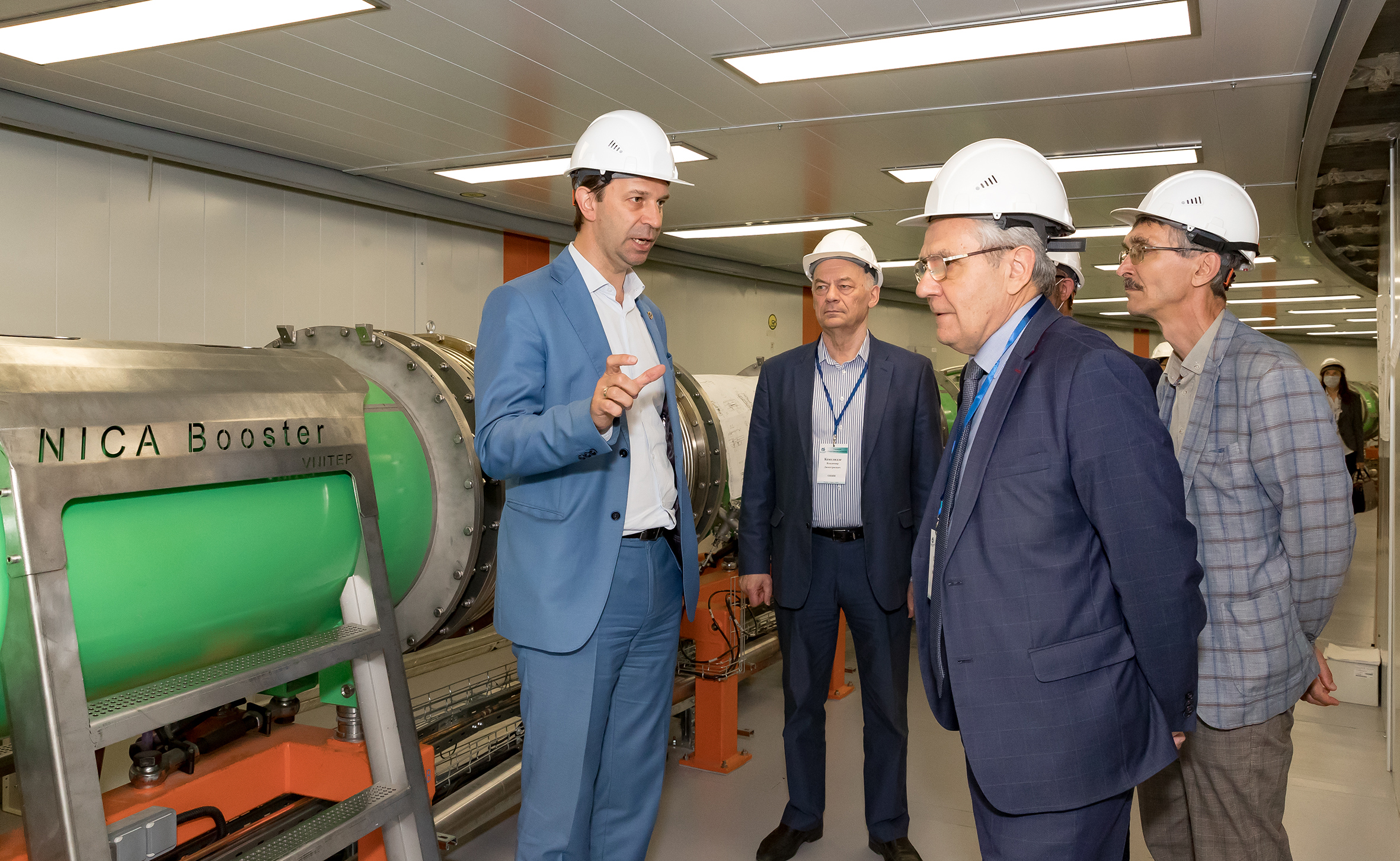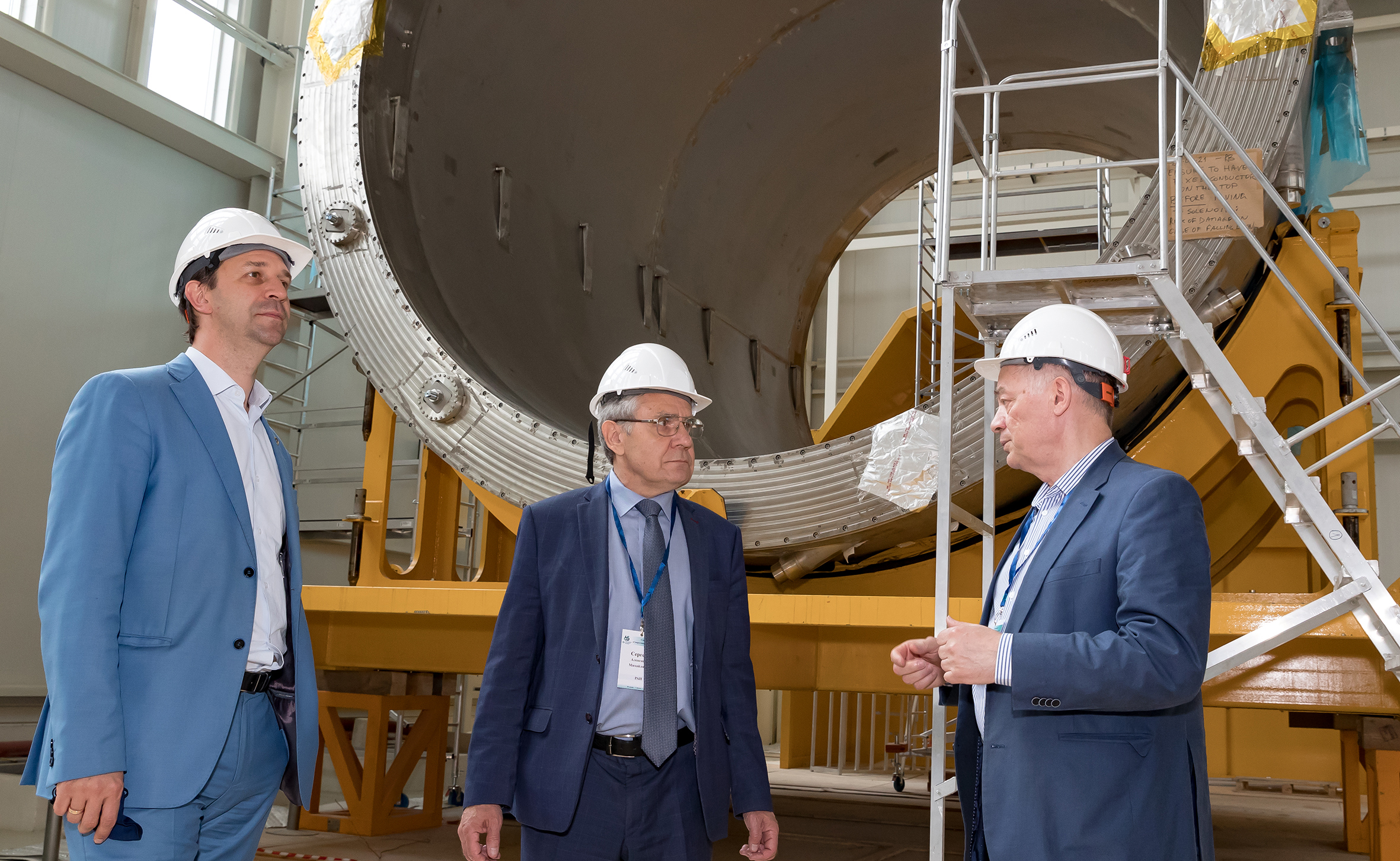Heavy nuclei physics discussed at a meeting in Dubna
News, 01 July 2021
A three-day international meeting started yesterday, on 30 June, in the hybrid format in the International Conference Hall in Dubna. It gathered about 200 participants from Russian and foreign scientific centres, including from Germany, Switzerland, Israel, and the USA. The event is being held under the auspices of the RAS Council on Heavy Ions. RAS President Alexander Sergeev takes part in the meeting.
Welcoming participants, Alexander Sergeev highlighted the importance of the international status of the Joint Institute for Nuclear Research, “JINR is the only international scientific centre in our country. In order to ensure the development of world nuclear research, it is necessary to create international scientific organizations: this is how CERN and JINR were established. There should not be isolation and xenophobia. It is necessary to cooperate with colleagues abroad. The role of Dubna, as a centre basing on international cooperation and developing it, is significant for Russia.”
Director of the Joint Institute RAS Academician Grigory Trubnikov highlighted the importance of discussions of progress in the implementation of the project on the study of stability borders of nuclear matter. “This project has been selected within the support programme for large-scale scientific and research projects organized by the Russian Government. The Russian Academy of Sciences coordinates this project,” Grigory Trubnikov said.
“The development of studies on heavy nuclei up to 2030 and further provides the basis for new programmes discussed nowadays at the Joint Institute, the Rosatom State Corporation, and many other RAS organizations,” JINR Director Grigory Trubnikov highlighted.
RAS President Alexander Sergeev made the report “Ionization of vacuum by extreme light fields” at the meeting. RAS Deputy President Sergey Lyulin also represented the Russian Academy of Sciences. The RAS delegation visited the Superheavy Element Factory, the NICA construction site, and the factory of superconducting magnets.
Within three days, participants of the event will discuss the status of research in the fields of superheavy element synthesis and tasks of applied scientific fields related to the topic. This includes new generations of computing algorithms, material sciences, applied fields of sciences related to UHF devices of new frequency range and capacities, new-generation ion sources. Today, participants from RIAR, VNIIEF, JINR, IAP RAS, NIIEFA will present reports.
“Scientific Russia” about meeting in Dubna
inScience portal reports on the meeting
Photos by Elena Puzynina






